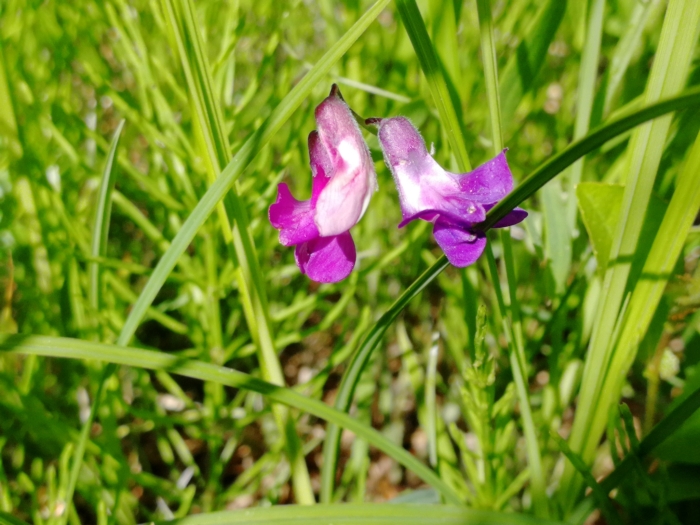Marsh Pea
(Lathyrus palustris)
Marsh Pea (Lathyrus palustris)
/
/

Kseniya Atuchina
CC BY 4.0



















































Estimated Native Range
Summary
Marsh Pea is valued for its ability to thrive in wet conditions and is often used for naturalizing in riparian restoration projects. It can also be used in garden settings as a ground cover or trained up a trellis for vertical interest. While it prefers part shade, it can tolerate full sun if sufficient moisture is provided. It requires medium amounts of water and can grow in a variety of soil types, provided they have slow to medium drainage and are consistently moist. Gardeners should be aware that, although not aggressive, it can spread in ideal conditions and may require management to prevent unwanted spread.CC BY-SA 4.0
Plant Description
- Plant Type: Vine, Herb
- Height: 2-4 feet
- Width: 1-3 feet
- Growth Rate: Moderate
- Flower Color: Purple
- Flowering Season: Summer
- Leaf Retention: Deciduous
Growth Requirements
- Sun: Part Shade, Full Sun
- Water: Medium
- Drainage: Slow, Wet, Medium
Common Uses
Bee Garden, Bird Garden, Butterfly Garden, Edible*Disclaimer: Easyscape's listed plant edibility is for informational use. Always verify the safety and proper identification of any plant before consumption., Low Maintenance, Showy Flowers, Water Garden
Natural Habitat
Native to wet meadows, marshes, and stream banks across temperate regions of the Northern Hemisphere
Other Names
Common Names: Marsh Vetchling, Marsh-Pea, Kær-Fladbælg, Sumpf-Platterbse, Gesse Des Marais, Moeraslathyrus, China Bolotnaya, Kärrvial, Sumpvial
Scientific Names: , Lathyrus palustris, Lathyrus paluster, Lathyrus palustris var. palustris, Lathyrus occidentalis, Orobus palustris, Lathyrus nudicaulus, Lathryus incurvus, Lathryus myrtifolius, Lathryus occidentalis
GBIF Accepted Name: Lathyrus palustris L.